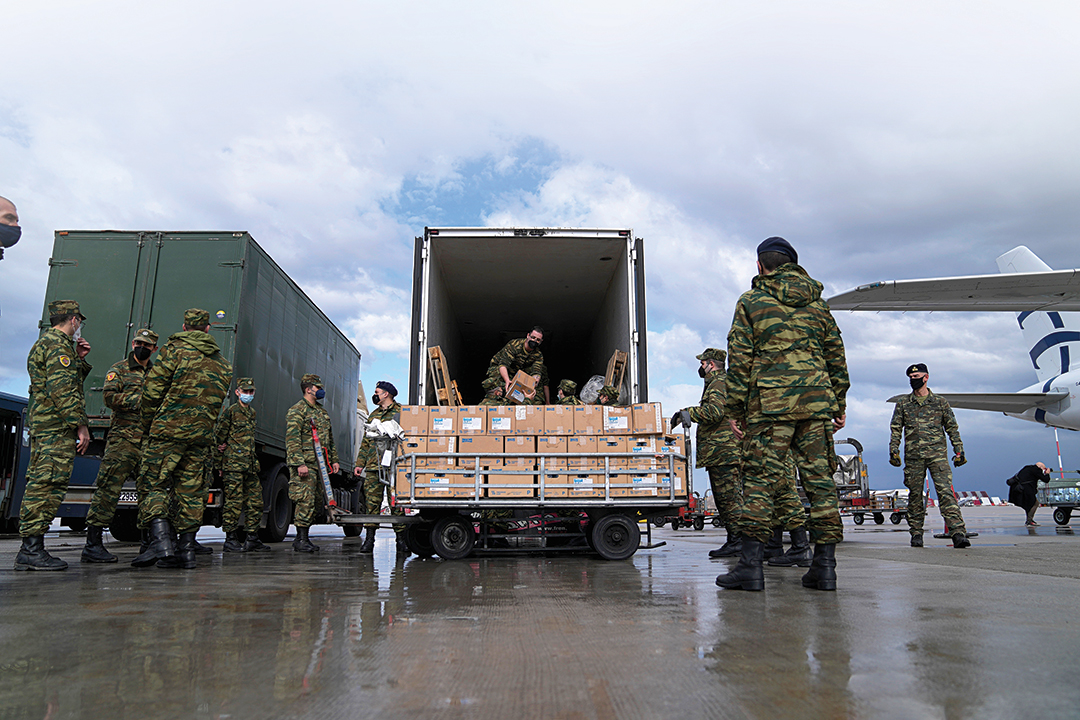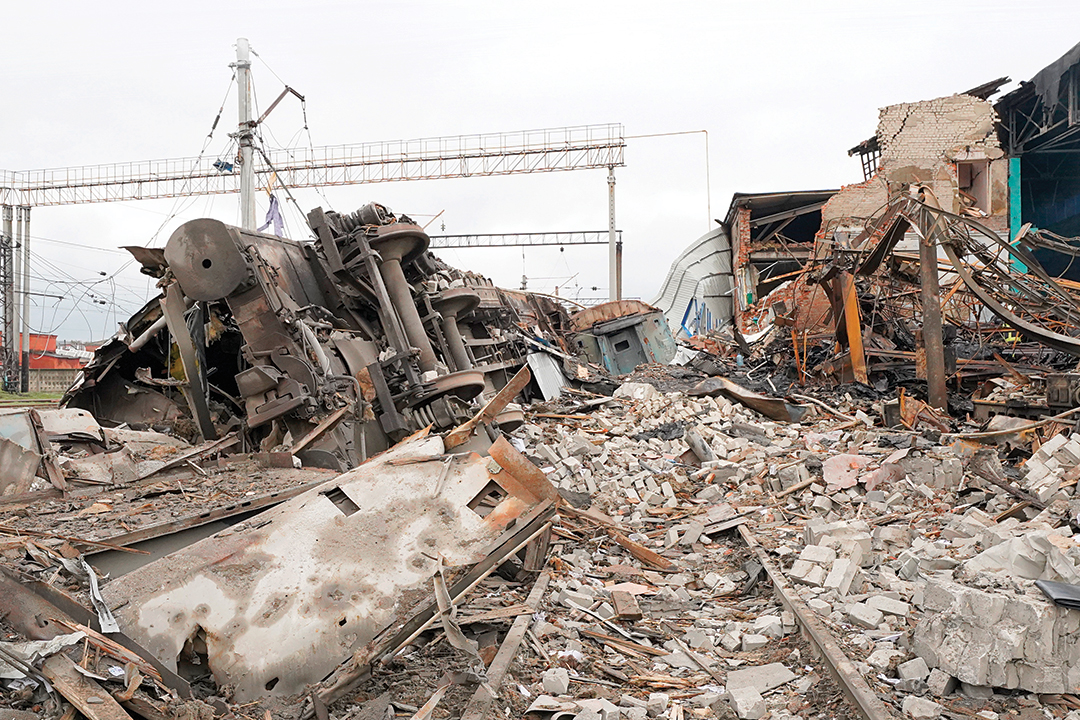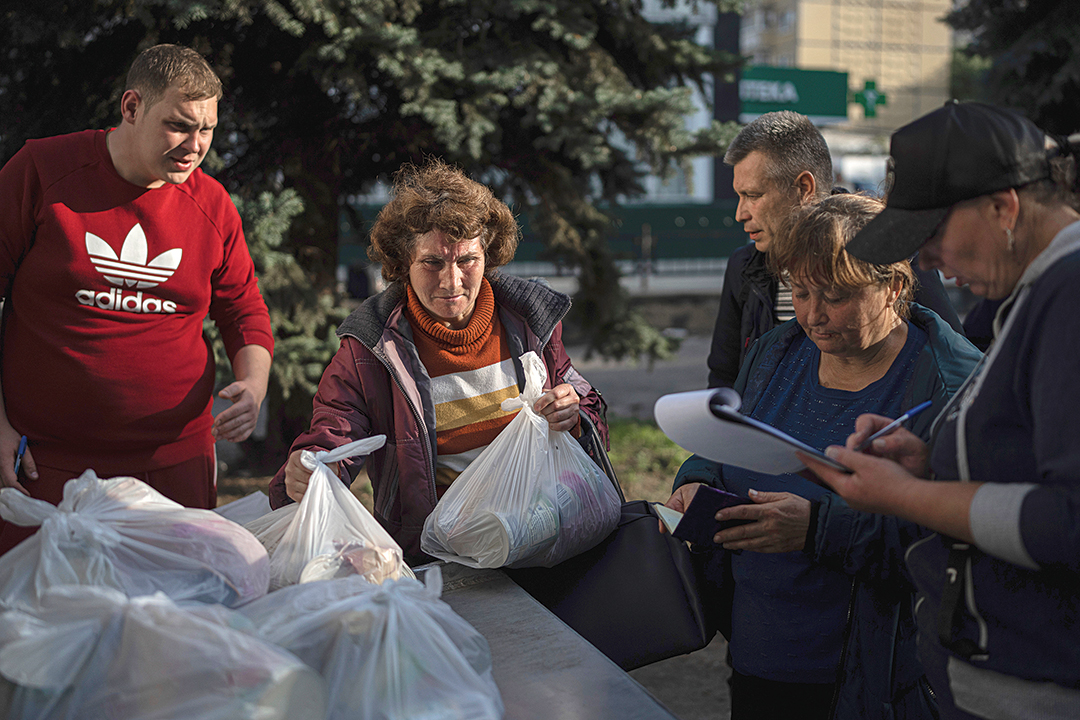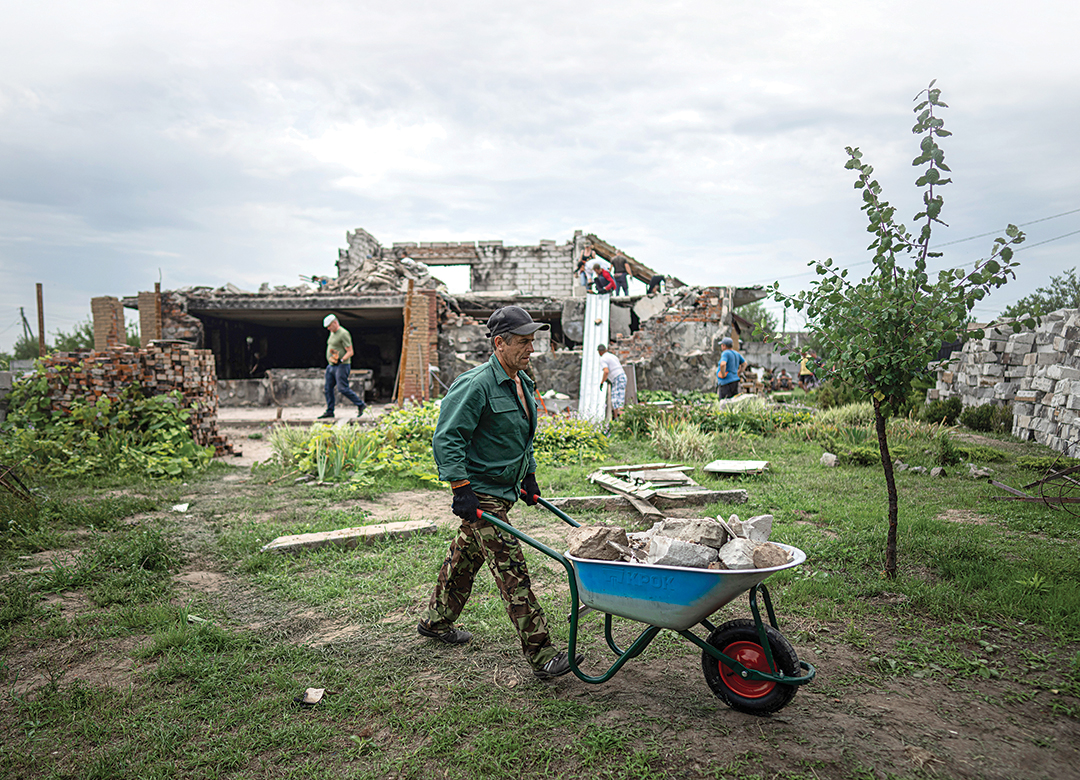How International Donor Programs Responded
By Dr. Kseniya Sotnikova, political officer, EU Advisory Mission, Ukraine
Since 2014, Ukraine has witnessed a massive inflow of international aid, including from donor organizations (DO) encouraging reforms that can help lead the country to NATO and European Union membership. But Russia’s brutal invasion in February 2022 presented DOs with multiple challenges, including personal security threats, unprecedented strategic issues and their ability to deliver on their core objectives. Some were unable to proceed and closed their offices in Ukraine, some managed to have an impact remotely through existing networks of Ukrainian associates, and some continued working by amending their procedures and/or priorities. Now, well over a year later, it is possible to assess the resilience of the DOs that continued to deliver on their mandates despite the shocks caused by the full-scale invasion and to identify the factors that ensured their ability to adapt to this “new normal.”
February 2022 was a turning point that disrupted the strategic and operational framework of the DOs. However, each was affected differently, and their responses differed as well. The areas in which the organizations faced the greatest difficulties are indicators of their vulnerabilities. An inability to continue working in a previous mode is an indication of a certain barrier. Some organizations managed to overcome these barriers and adapted to the new circumstances, thus demonstrating a “nurtured resilience.” While analyzing this adaptation, the resilience factors should be considered as the conditions and actions that allowed certain DOs to overcome, or find a way around, these barriers. Within this conceptual framework, we can analyze the resilience of the DOs, detect the factors that allowed them to bounce back, and reshape the protocols and policies in order to adapt to the new strategic and operational framework.
This research is based on wide empirical data collected through personal interviews with top managers, project coordinators, program analysts and advisors, procurement specialists, and other incumbent and former employees of 10 DOs of differing scales that were operating in Ukraine in February 2022. While the data provided by these interlocutors is limited to their experiences, and does not cover the full scope of the donor community, these DOs represent most of the categories of donors working in the country: bilateral and multilateral, local and global, working with either nongovernmental organizations (NGOs) or Ukrainian state agencies, and cover a wide range of issues in their project activities (security, anticorruption, legal, educational, gender, humanitarian, etc.) Their cases have multiple similarities. Given the variations in size, scope, funding and presence, this selection can be considered representative, and the trends identified illustrate the larger processes. Due to the sensitivity of the subject, the information obtained from the interviewees is presented without reference to specific experiences.

Reactions to the Invasion: Evacuation, Reassessment, Adaptation
On February 24, 2022, when Russia invaded Ukraine on multiple fronts, massive evacuations started. Local DO staffs either left Ukraine with most other non-Ukrainians or settled in the western regions of the country (due to financial constraints, family commitments, and also because Ukrainian men from 18 to 60 years old were prohibited from traveling abroad by the newly imposed martial law).
DO managers had to deal with multiple challenges in conditions of extreme uncertainty (security, political, informational and operational). This critical phase had two main stages:
1. Ensuring the physical security/relocation of the staff. The DOs handled this in different ways.
- Ensured the relocation prior to February 24. After learning an invasion may occur, staff were moved from Kyiv and other regions with high security risks and teleworking policies were introduced.
- Had clear evacuation plans implemented on February 24. These plans differed among DOs and covered the relocation of international and local staff, evacuation routes, and communication channels.
- Had no clear evacuation plans. These DOs left it up to staff to deal with their immediate transportation and other needs.
2. Making a strategic political decision.
- Discontinue or suspend work.
- Or continue to support and cooperate with Ukrainian interlocutors, understanding that this would require rapid adaptation and multiple changes.

The DOs that decided to pursue the cooperation scenario faced multiple challenges:
1. Preexisting strategic and operational frameworks proved irrelevant. Some planned projects were impossible to deliver because of the security situation in the regions where the projects were supposed to take place, or because of a change in the priorities of the Ukrainian beneficiaries (many people either joined Ukraine’s armed forces or evacuated).
2. Lack of long-term strategies.
3. Communication/coordination issues. Staff relocated chaotically, establishing new working conditions and work redistribution took time. Some local staff moved to regions where the DOs hadn’t been engaged before, which opened possibilities for new activities. Communications with the Ukrainian beneficiaries were unstable and some submitted inconsistent requests. In addition, if a project was registered with the Ukrainian government as “international technical aid,” substantial changes to the project required its reregistration with the country’s Cabinet of Ministers. Previous logistical chains were mostly broken. Some DOs referred requests for humanitarian aid to their international partners.
4. Bureaucracy. Internal bureaucratic procedures at DOs caused delays or blocked certain aid deliverables. For instance, when it came to ordering goods that were in high demand (such as first aid kits, personal protection equipment and generators), the regular procurement procedures could be complex, while other buyers (NGOs and individuals) could ensure fast payments, including in cash, making it impossible for the DOs to compete. Ukrainian legislation had not yet adapted to address issues related to importing aid from abroad, and custom clearance procedures delayed deliveries.
5. Capacity limitations. There were limits in the quantitative aspects (lack of staff), and the qualitative ones. In this new operational environment, the DOs needed additional knowledge and expertise that sometimes could not be provided by the in-house specialists. New projects emerged with specific procurement items and required technical knowledge. The revised priorities and goals of the DOs often caused internal restructuring in accordance with new lines of operations, creating new units and the hiring of subject-matter professionals or the retraining of existing staff.
6. Limited finances. In order to deliver on the projects identified as new priorities, the DOs had to either repurpose money from other projects or use additional funding from partner missions.
By the summer of 2022, the operational environment was relatively stable, and mid- and long-term planning became possible. The organizations/projects that discontinued their activities had to terminate the contracts with their local staff, many of whom were later hired by the DOs remaining in Ukraine, thus improving their expert capacity. The DOs resumed their regular project activity and by end of 2022 had finalized their internal structural changes and revised project master plans. New projects appeared, including in regions that previously weren’t covered. Bureaucratic procedures became routine again (some of the DOs had temporarily introduced more flexible formats for applying for and/or reporting aid, as well as simplified hiring procedures).
The DOs had to come up with individual solutions for their staff working abroad. Some kept operating in a fully remote or hybrid format. Others set deadlines for staff to decide whether they would prefer to return to Ukraine or terminate their contracts. Around these deadlines (mostly August to October 2022), the DOs had numerous vacancies because employees from the local and international staffs had security concerns. Thus, the DOs had a one-time significant inflow of new staff, which required some adaptation. As they did during the chaotic period right after the full-scale invasion, most of the DOs offered assistance to their existing networks of Ukrainian beneficiaries and experts. This built a new level of trust and set the tone for further cooperation.

Lessons Learned: Implications
Based on the trends identified in the previous section, we can assess the DOs in terms of their vulnerability and resilience. Building on existing studies, we adopt the definition of vulnerability as exposure to exogenous shocks, and associate resilience with actions enabling an institution to withstand or recover from the negative effects of shock. With regard to the DOs operating in Ukraine since February 2022, it is possible to identify:
1. Vulnerability factors
- Complex decision-making formats. This applies to both strategic decisions (whether to continue the mandate of the organization), and operational ones (how to redistribute funds, what lines of activity to terminate or launch). This is where it is important to consider the belief system (values) of the organization and its leadership because they directly affected the pace and the subject-matter outcome of decisions made during the most turbulent period after the invasion.
- Vulnerabilities deriving from the physical location of the DOs’ headquarters and regional offices.
- Dependance on logistical chains that lacked diversification.
However, the main factor that caused exposure of the DOs to shocks from the invasion was either a lack of emergency plans, or poor operational preparedness to implement them.
2. Resilience factors
- Morale of the staff.
- Relocation options. An availability of regional offices farther from the fighting and organizations’ ability to open temporary offices abroad (e.g., in Poland) helped streamline adaptation.
- Ability to expand capacity by hiring new staff, creating new positions and outsourcing some tasks.
- Previously established telework formats that were mostly set up in 2020-2021 while adapting to the limitations during the COVID-19 pandemic.
- Flexibility of internal procedures. Independence in project managers’ decision-making (e.g., to repurpose funds, rearrange project master lists, reassign tasks to the relocated staff) and the ability to temporarily simplify bureaucratic procedures for the beneficiaries (e.g., applications for aid and reporting of its use).
- Levels of bureaucracy. The NGOs on the receiving end were more flexible than the Ukrainian public institutions.
- Access to networks. It was easier for the DOs that relied on their previously established liaisons in Ukraine (with other donors, Ukrainian partners, experts and vendors), and with partnering DOs if they were a part of a global network.

Apart from the high morale of staff, which was a key driver through the most difficult period, the main factor facilitating adaptations was the availability of previously established protocols and connections to help the DOs bounce back faster.
It is also possible to assess the DOs’ work over 2022-2023 in terms of their efficiency and effectiveness. Because efficiency is a productivity metric — looking at the ability to produce the result while investing the most optimal set of resources possible — it focuses on operational means used and/or wasted during the strategy implementation. In the cases studied in this research, the DOs had little possibility to ensure an optimal ratio between inputs and outputs, or to eliminate additional costs to achieve goals. On the contrary, the delivery of strategic and operational results was often delayed and the planning itself was volatile, sometimes changing final project goals during the implementation phase. The DOs also had to outsource some activities when they lacked capacity, which induced additional spending. Also, during the critical initial phase, many DOs chose to keep paying staff and beneficiaries, regardless of their practical input into the program/project activity, to maintain existing capacity and relationships.
Effectiveness is evaluated against the ability to ensure the final result, and is a metric of quality. It also considers whether an organization’s activities have improved its position (including in the reputational aspect). The common goal of the DOs working in Ukraine is to bring the country closer to the best democratic standards. This supersedes the fact that concrete project-related goals and timelines were changed due to the restructuring of project activities and/or initial delays caused by uncertainties and bureaucracies. The donor community that maintained cooperation with their Ukrainian beneficiaries managed to maintain working relationships with partners, streamline internal and external coordination, and restructure project activities. The DOs continued helping Ukraine in its resistance to Russia’s aggression and in enacting reforms that continued even during 2022.
While most of the DOs had returned to regular project and program activities before then end of 2022, it is important to dwell on the lessons learned from the shock of Russia’s invasion, which proved to be a stress test for every DO in the country. This paper’s findings have demonstrated that a key factor facilitating the resilience of the DOs was preparation: the availability of previously established formats, protocols and connections. It is highly advantageous for DOs operating in a volatile security context to develop plans, instructions and protocols that can be activated in a critical moment, saving time and effort and thus improving the organizations’ resilience:
- Create security protocols for different threat levels, including preventive relocation and evacuation options (taking into account different escape possibilities for local and international staff).
- Plan for how to act after the evacuation (communication channels, teleworking instructions).
- Create emergency internal protocols for simplifying bureaucratic procedures (as a temporary solution only). This includes flexibility for beneficiaries in terms of application for and reporting of aid, as well as for the DO project managers, to give them more freedom in decision-making on repurposing funds and changing project master plans. Human resources should also have options to utilize special contracts and/or other formats to bypass hiring processes. This should come with a clear approval chain in place to prevent abuse of the simplified procedures.
- Improve coordination among donors to prevent overlapping efforts.
- Streamline coordination with local authorities. The DOs could conduct preliminary negotiations with host countries about simplifying bureaucratic procedures should a crisis erupt. This could refer to the registration of international technical aid projects (and the ability to rapidly change their specifications), and the possibility of modifying custom clearance procedures for certain critical goods (basing the list on risk assessments). Here, as in the previous suggestions for internal DO rules, a system of checks and balances needs to be introduced to prevent the misuse of these options.


Comments are closed.